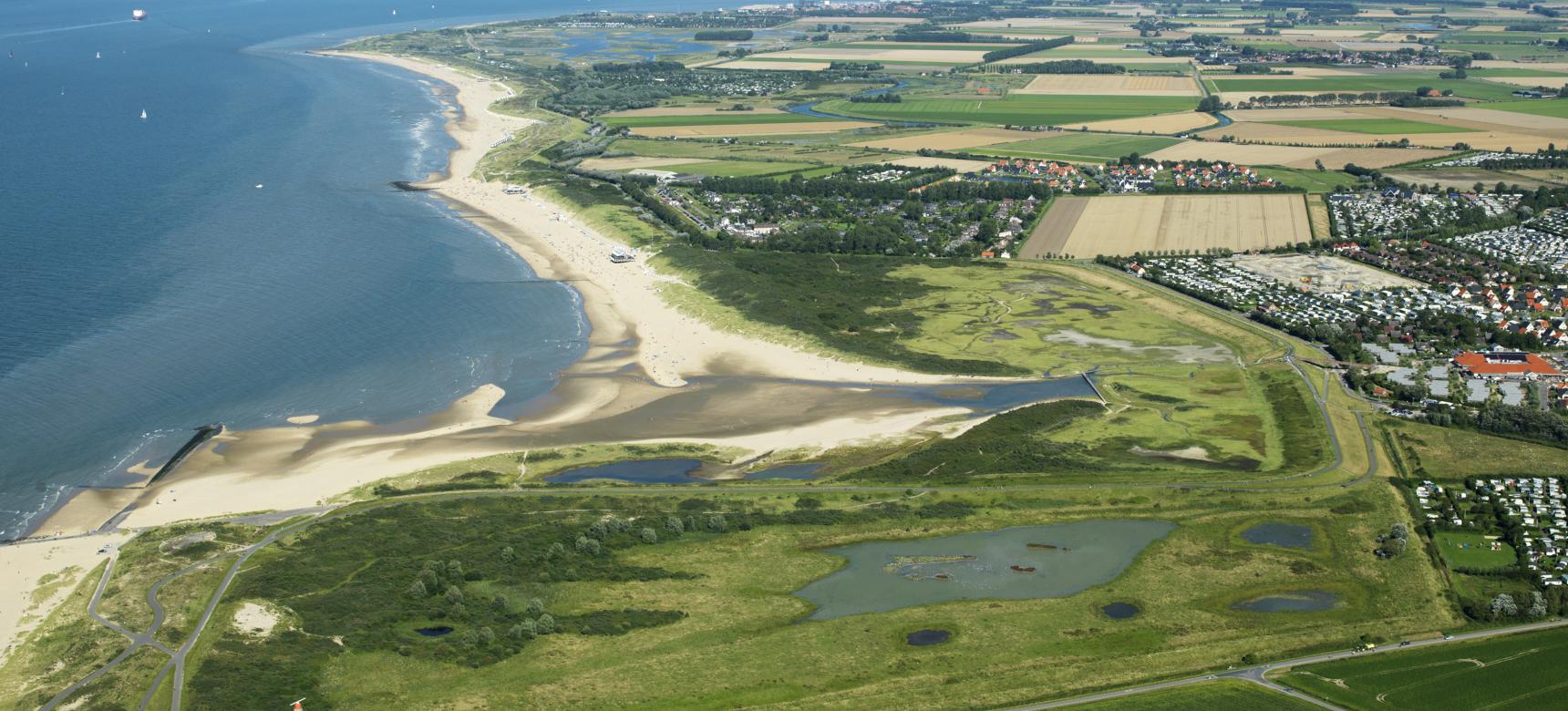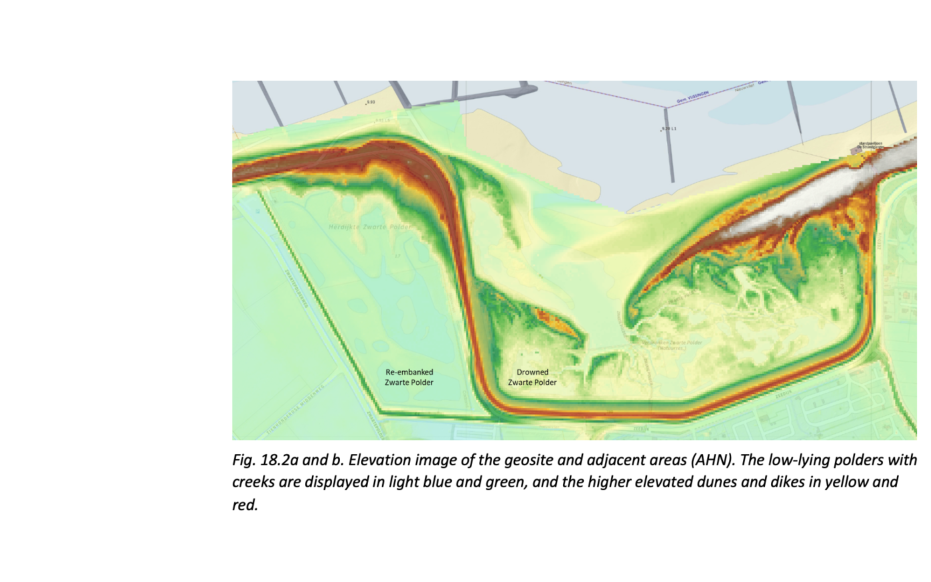Dike breache
However, the Zwarte Polder's existence was not long-lasting. During a storm surge in 1802, the dike collapsed and fertile polder land disappeared under water. Only a small part of the south side of the Zwarte Polder could be diked again in 1803 to protect the area behind it. At the site of the Drowned Zwarte Polder a tidal area formed with mudflats, salt marshes and tidal channels. The sandy mudflats lie dry at low tide, allowing the sand to blow up and dunes to form against the dikes. Between the mudflats and dunes are the salt marshes. These are only flooded during spring tides. This variation creates an area with diverse, special flora and fauna.


